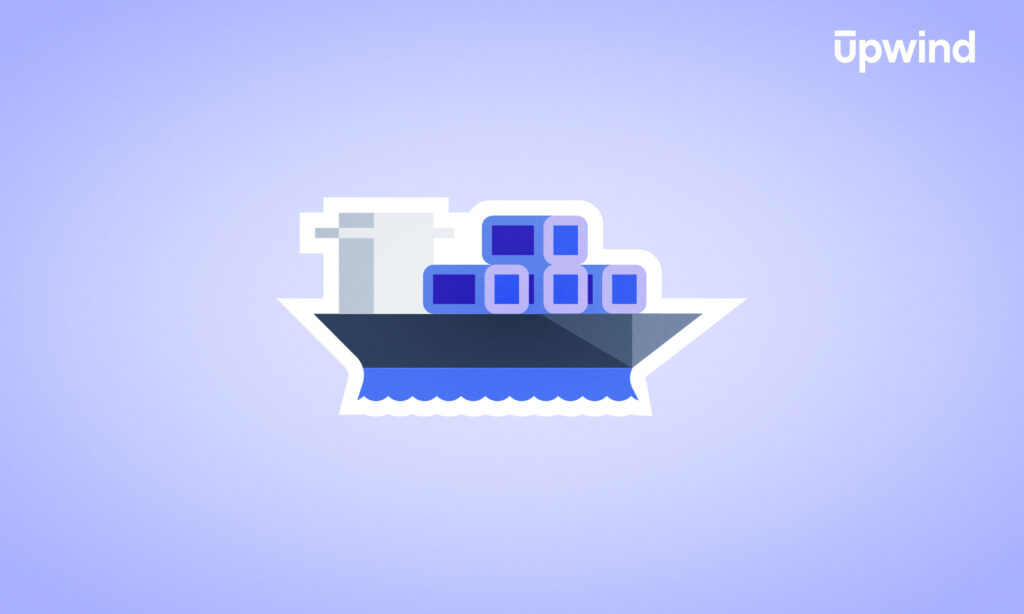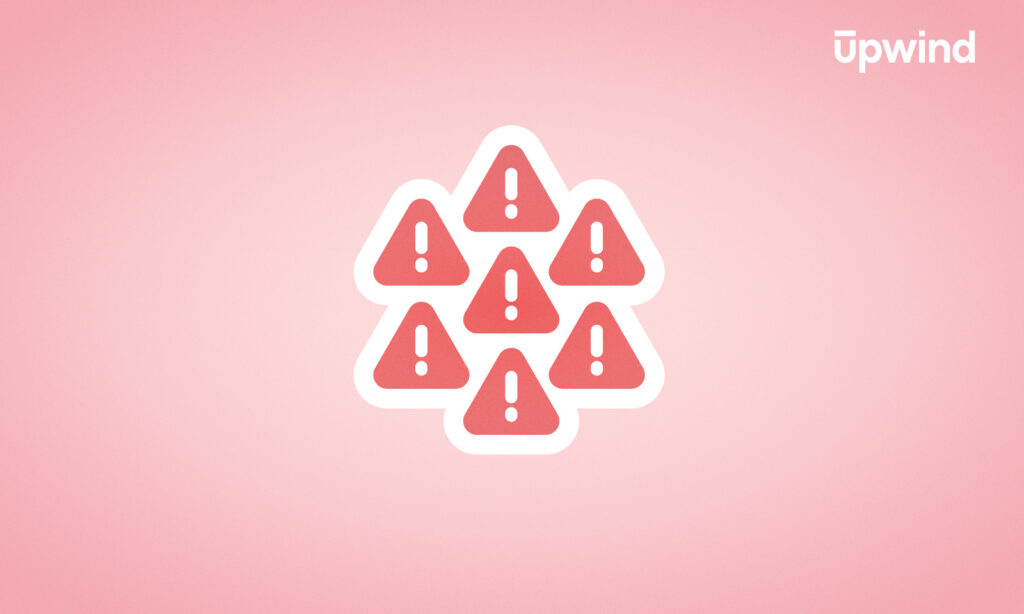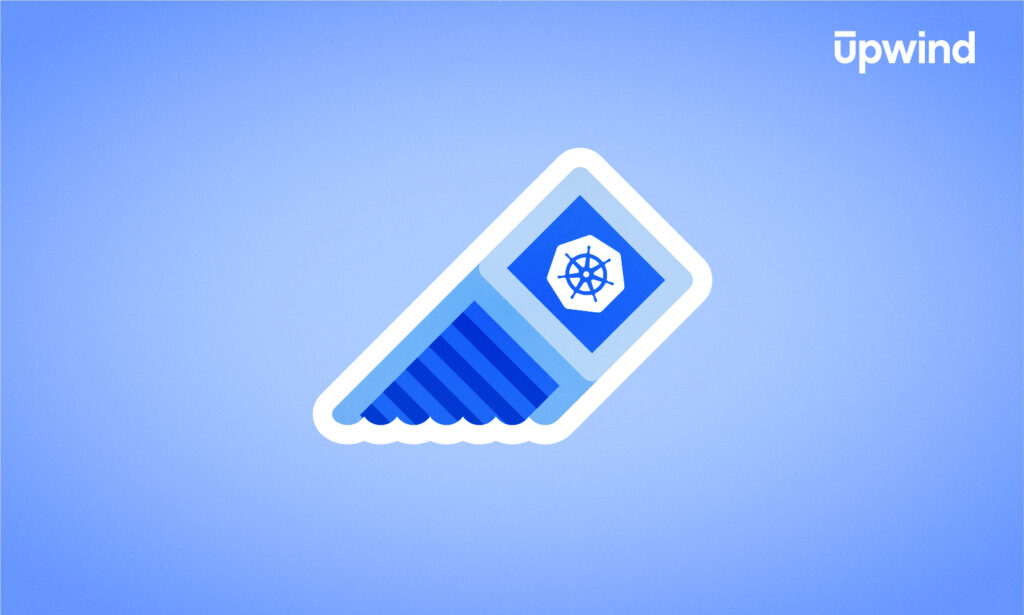
For security teams, Kubernetes isn’t just another box to check. While this dynamic system is often the core of modern cloud deployments, its vulnerabilities aren’t static. New issues appear suddenly and from a mix of factors — complexity in configuration, rapid innovation, and a vast ecosystem of tools and extensions. New attack vectors also emerge as organizations adopt advanced features, integrate third-party tools, or scale their workloads.
How can teams even start to understand patterns among these types of vulnerabilities? And how do they secure them efficiently? While we’ve already covered Kubernetes runtime security, this article will take a 35,000-foot approach: we’ll look at broader patterns among Kubernetes vulnerabilities and offer actionable tips for securing this dynamic business tool.
Understanding Kubernetes Vulnerabilities
Kubernetes (often called K8s) is an open-source platform for deploying, scaling, and managing containers. Containerized applications contain everything they need to run, including code, libraries, and dependencies, and Kubernetes eases their path, handling how they run across clusters of machines, ensuring high availability and easy scaling.
The flexibility, usability, and adaptability that have made Kubernetes a cornerstone of cloud computing also introduce significant security challenges. Kubernetes is not secure by default. For example, network policies that control traffic between pods are not enforced unless explicitly configured. Similarly, Role-Based Access Control (RBAC), which restricts access to resources, must be enabled and tailored to limit permissions. While Kubernetes includes security features like these, it leaves them disabled or minimally configured out of the box, requiring security teams to take deliberate steps to activate and customize protections to secure their environments effectively.
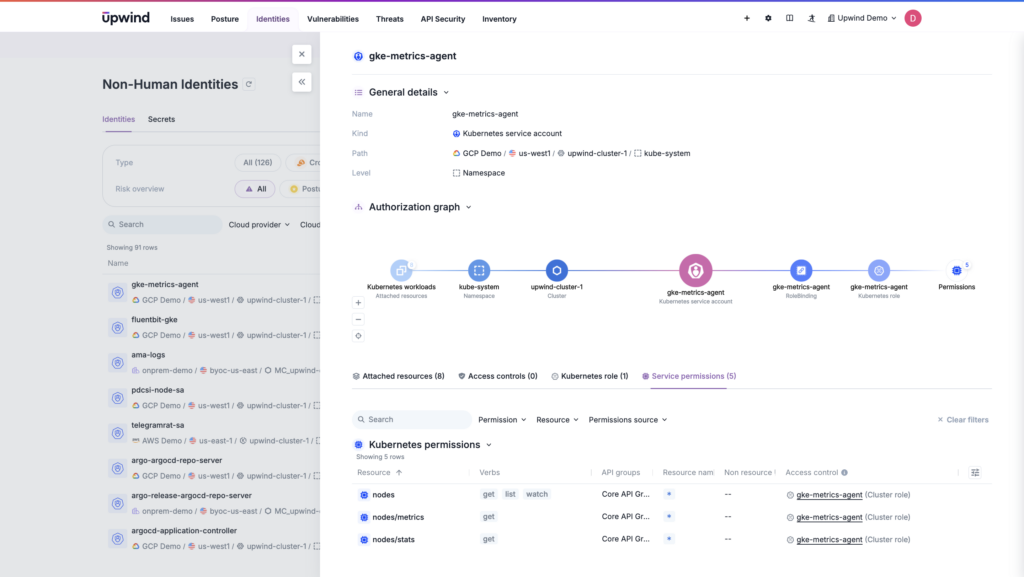
And those insecure elements can have a substantial impact on the security of entire cloud-native environments. For instance, an exposed cluster that’s been misconfigured or doesn’t have basic security measures deployed could leave the door open for threat actors to cause damage or move laterally to exfiltrate critical data.
Ultimately, Kubernetes vulnerabilities result from its default openness, reliance on user-driven configuration, and the complexity of managing its rapidly evolving ecosystem.
Kubernetes vulnerabilities fall into four categories:
- Misconfigurations that can lead to compromise because of inaccurately deployed Kubernetes environments. These are often unintentional vulnerabilities caused by setup complexity.
- Access control issues like admin rights provided to the wrong user or higher permissions provided to clusters than necessary.
- Known software issues in the Kubernetes control plane or pods that can enable a threat actor to gain a foothold and escalate privileges or trigger a container breakout.
- Environment-level vulnerabilities that relate to weaknesses in the host system underpinning the Kubernetes environment. This is especially pertinent for self-hosted Kubernetes environments. Using a hosted Kubernetes as a Service (KaaS) means that cloud providers take it upon themselves to keep the underlying architecture secure.
Its open-source environment makes Kubernetes simultaneously more and less secure. The number of contributors is well beyond 150,000 people globally, including developers at some of the largest brands. This means that, in theory, major vulnerabilities can be identified and a fix pushed relatively quickly. However, the evolving threat landscape includes more attacks on cloud environments and associated technologies like Kubernetes. This means that security teams must ensure they have deployed best practices to secure their Kubernetes at build-time and runtime to limit the risk of any single vulnerability causing issues.
Runtime and Kubernetes Scanning with Upwind
Upwind offers runtime-powered container scanning — when Kubernetes threats are most dynamic — so you get real-time threat detection, contextualized analysis, remediation, and root cause analysis that’s 10X faster than traditional methods.
Critical Kubernetes Vulnerabilities
Kubernetes has rapidly grown in popularity, becoming the de facto standard for container orchestration in cloud-native environments.
Kubernetes is one of the most popular containerization platforms, with 84% of companies using containers and 78% of those opting for Kubernetes.
Kubernetes’ popularity, while a testament to its utility, has also made it an appealing target for attackers. This increased exposure has amplified the need for organizations to understand potential vulnerabilities within Kubernetes environments and how they can be exploited. As adoption grows, so does the complexity of managing and securing these environments, underscoring the importance of proactively identifying weaknesses.
As we dive into the most critical vulnerability types, it’s important to remember that, regardless of type, not all Kubernetes vulnerabilities are created equal.
Some may not have the same potential impact on the organization if successfully exploited. Others may have their impact mitigated if other security tools have been deployed effectively. Categories aren’t indicative of criticality. Instead, they offer insight into the most common “doors” that attackers use to gain entrance to the environment.
Configuration vulnerabilities
Kubernetes is a very flexible container orchestration platform. As a result, there are plenty of configurations in the system that need to be set up correctly for the environment to remain secure and containers to remain isolated.
Configuration vulnerabilities are of greater concern with self-hosted implementations; KaaS providers resolve many of these issues automatically.
Authentication and authorization flaws
This class of flaws includes issues like weak authentication mechanisms, improper management of service accounts, lack of multi-factor authentication, misconfigured access controls, and not properly securing Kubernetes Secrets. Authentication flaws can lead to unauthorized access to the cluster, allowing attackers to potentially compromise workloads or exfiltrate sensitive data.
Container escape vulnerabilities
Containers should be isolated from each other when running on Kubernetes. This protects containers from any issues from another container and keeps the host secure against threats. If containers are improperly isolated, this could lead to a container escape that allows threat actors to compromise the host system and move laterally into other containers or systems in the technology infrastructure.
Network security weaknesses
Because it is a cloud-deployed solution, ensuring that network defenses are implemented correctly is a key facet of protecting Kubernetes against compromise. This class of vulnerabilities includes issues in network routers, inaccurate network traffic monitoring, or incorrectly exposed network-accessible assets.
Supply chain vulnerabilities
A supply chain vulnerability in Kubernetes refers to a weakness in building and deploying container images, where malicious code or vulnerable dependencies can be introduced at any stage, potentially allowing attackers to gain unauthorized access to Kubernetes workloads.
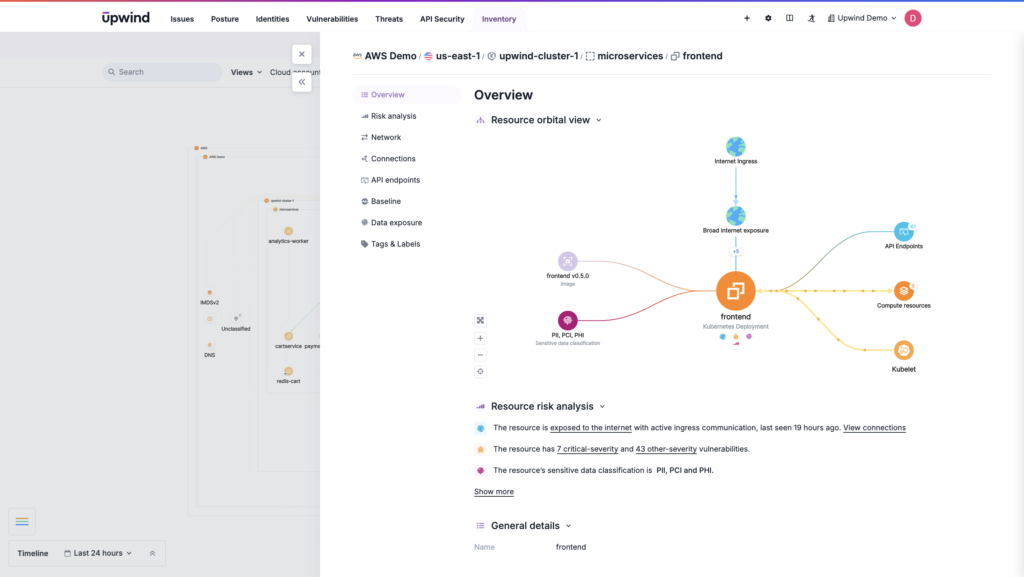
High-Impact CVEs in Kubernetes
Since its launch in 2015, Kubernetes has had 326 identified vulnerabilities added to the Common Vulnerabilities and Exposures (CVE) database. In 2024 alone, 52 vulnerabilities of all severity levels joined them. These CVEs mostly relate to external tools that integrate with Kubernetes rather than Kubernetes itself. This should come as little surprise, given the popularity of Kubernetes with container orchestration.
Here are some of the best-known and impactful Kubernetes vulnerabilities:
| Vulnerability / Category | Example CVE | External Tool or Kubernetes? | Why it’s Well-Known | Impact |
| API Server Exploits | CVE-2019-11247 | Core Kubernetes | Allowed privilege escalation via improperly configured RBAC | Attackers could gain elevated control over cluster operations |
| Pod Security Bypass | CVE-2020-8554 | Core Kubernetes | Demonstrated a flaw in Kubernetes networking, enabling attackers to intercept traffic by manipulating IPs | Potential data theft or man-in-the-middle attacks |
| Container Escapes | CVE-2021-25741 | Core Kubernetes | Exploited improper symlink handling to bypass container isolation and access the host filesystem | Allowed attackers to compromise host systems and escalate privileges |
| Etcd Misconfiguration | N/A | Core Kubernetes | Frequent issue where etcd, storing cluster secrets and configurations, is left publicly accessible | Exposes sensitive data, including API keys and secrets, to attackers |
| Supply Chain Vulnerabilities | N/A | External tool | Highlights risks from compromised container images or Helm charts widely deployed across clusters | Attackers can introduce malicious code during image build or deployment phases, spreading compromise |
These vulnerabilities represent some of the most significant risks in Kubernetes environments, spanning both core components and external integrations. While Kubernetes offers features for container orchestration, its complexity and flexibility often introduce opportunities for misconfigurations, exploitation, and weak security practices. Understanding these vulnerabilities—and why they matter—helps security teams prioritize their efforts.
Here’s why these Kubernetes vulnerabilities matter:
API Server Exploits (CVE-2019-11247)
This vulnerability exploited flaws in Kubernetes’ Role-Based Access Control (RBAC) configuration. If RBAC permissions were not properly set, users with limited access could escalate privileges, gaining access to more cluster resources than intended.
The API server is the central control plane of Kubernetes. Any compromise here gives attackers the ability to manipulate critical cluster operations. This vulnerability highlighted the risks of default or overly permissive RBAC configurations.
Pod Security Bypass (CVE-2020-8554)
This vulnerability allowed attackers to manipulate Kubernetes’ network policies to intercept traffic between pods or external clients. By assigning IPs maliciously, attackers could redirect traffic and perform man-in-the-middle attacks.
Network policies are a core feature for ensuring secure communication between Kubernetes resources. A bypass like this compromises pod isolation and could lead to data theft or unauthorized data exposure. Attackers could eavesdrop on sensitive communications, extract secrets, or compromise applications.
Container Escapes (CVE-2021-25741)
This vulnerability exploited improper handling of symbolic links within Kubernetes. An attacker could use a symlink in a container to escape the container’s isolation and gain access to the host filesystem.
Containers are meant to be isolated from each other and the host. A container escape undermines this foundational security principle and allows attackers to compromise the host machine, potentially affecting other containers and the broader infrastructure. Full access to the host system could enable attackers to escalate privileges, move laterally, and execute arbitrary commands across the cluster.
Etcd Misconfiguration (No CVE)
Etcd is Kubernetes’ key-value store that houses sensitive cluster data, including secrets, configurations, and API access tokens. A frequent misconfiguration is leaving etcd exposed to the public internet without proper authentication.
Etcd is a treasure trove for attackers. Gaining access to it could expose everything needed to compromise a Kubernetes cluster entirely. Unauthorized access could lead to data exfiltration, cluster manipulation, and full compromise of Kubernetes environments.
Supply Chain Vulnerabilities (No CVE)
This category involves vulnerabilities in third-party tools, container images, or Helm charts that integrate with Kubernetes. The SolarWinds attack is a prime example, where attackers inserted malicious code into widely used software that propagated through supply chains.
Kubernetes relies heavily on external tools and pre-built container images. A compromised image or dependency could introduce malware into production environments. Attackers can gain access to Kubernetes workloads, spread malware, or disrupt operations at scale, often without the victim realizing the source of the breach.
Are these CVEs still an issue for organizations? Likely not. All are patched, meaning that updates addressing these specific vulnerabilities are available. But applying the necessary patches is still an issue. Further, new vulnerabilities often emerge using similar patterns of weakness, attack vectors, and security missteps.
So what can you do?
Essential Kubernetes Vulnerability Lessons
By analyzing these vulnerabilities and taking proactive steps, organizations can significantly reduce their Kubernetes attack surface. Here are some actionable takeaways from each of the key vulnerabilities highlighted.
API Server Exploits (CVE-2019-11247)
Lessons learned:
- Misconfigured Role-Based Access Control (RBAC) can allow privilege escalation, granting attackers unauthorized access to cluster resources.
- Overly permissive access is a recurring issue in Kubernetes environments.
Steps to take next:
- Audit RBAC policies to ensure least-privilege access.
- Validate RBAC configurations.
- Regularly review and rotate Kubernetes service account tokens.
Pod Security Bypass (CVE-2020-8554)
Lessons learned:
- Misconfigured network policies can allow attackers to manipulate ExternalIP services, enabling traffic interception or man-in-the-middle (MITM) attacks.
- Strong network isolation is critical to securing Kubernetes clusters.
Steps to take next:
- Implement strict ingress/egress policies.
- Prioritize network visibility and enforce microsegmentation.
- Regularly test network configurations against benchmarks.
Container Escapes (CVE-2021-25741)
Lessons learned:
- Improper handling of Kubernetes volume mounts can allow attackers to bypass container isolation, compromising the host filesystem.
- Runtime security is crucial to detect and prevent container escapes.
Steps to take next:
- Upgrade Kubernetes to the latest version to patch known vulnerabilities.
- Implement runtime security tools to monitor container activity and detect anomalies.
- Use sandboxed runtimes for high-security workloads.
Etcd Misconfiguration
Lessons learned:
- Leaving
etcdexposed without authentication or encryption can grant attackers access to sensitive cluster data, including secrets and configurations. Etcdsecurity is foundational to overall Kubernetes cluster security.
Steps to take next:
- Enable
etcdencryption for sensitive data at rest. - Restrict
etcdaccess to the Kubernetes control plane using firewalls or private networks. - Regularly monitor
etcdlogs for unauthorized access attempts.
Supply Chain Vulnerabilities
Lessons learned:
- Compromised container images or Helm charts can introduce malicious code into Kubernetes environments.
- Trusting unverified third-party tools or dependencies poses significant risks.
Steps to take next:
- Use trusted image registries and verify container images with image signing tools.
- Utilize Software Bills of Materials (SBOMs) to track dependencies and identify vulnerabilities.
- Regularly scan container images.
Protect Kubernetes in Real-Time with Upwind
Upwind includes cloud baseline monitoring designed to track potential issues in Kubernetes implementations, bringing together the context of your environment, dependencies, criticality, and real-time behaviors so truly critical Kubernetes vulnerabilities are identified and addressed faster.
Continuously monitor Kubernetes to prioritize risk, detect and respond to threats, and monitor real-time activity. It all works together to ensures that security teams have the information they need to track potentially malicious behavior.
For more information on Upwind’s vulnerability management for Kubernetes, schedule a demo.
Frequently Asked Questions
What makes Kubernetes clusters particularly vulnerable to attacks?
Kubernetes security challenges stem from complexity, flexibility, default settings, and shared infrastructure. Here are the basics:
- Default configurations are insecure
- Configurations are complex, offering plenty of flexibility
- Infrastructure is shared in a multi-tenant environment
- Supply chain dependencies add complexity
- Sensitive components are overexposed
- Workloads are ephemeral and dynamic, disappearing when complete
How often should vulnerability scans be performed in Kubernetes?
Vulnerability scans in Kubernetes should be considered an ongoing process. Here’s a good reference:
| Stage | Frequency |
| Pre-Deployment | With every build or code change |
| Deployment | Every CI/CD pipeline execution |
| Post-Deployment | Continuous runtime scanning |
| After Critical Updates | Immediately |
| Periodic Scans | Weekly or monthly |
What role does container security play in Kubernetes vulnerability management?
Container security plays a substantial role in Kubernetes vulnerability management. If containers are kept secure through secure coding practices and tracking container image provenance, then Kubernetes is overall more secure.
Scanning containers accomplishes the following goals in Kubernetes security:
- Securing the foundation of workloads
- Mitigating supply chain risks
- Preventing container escape attacks
- Lowering runtime security incidents
- Managing secrets and configurations
- Allowing for better visibility and auditing



